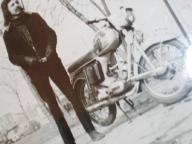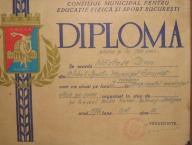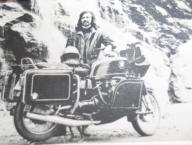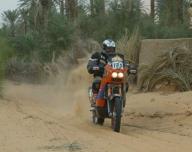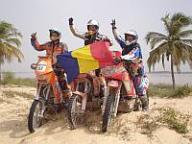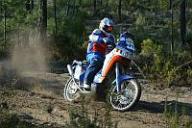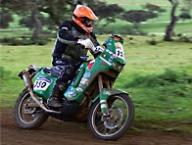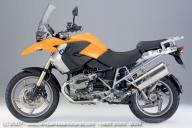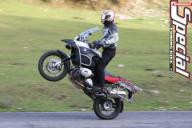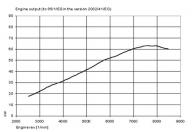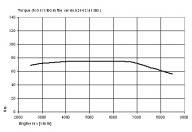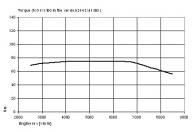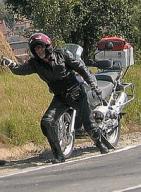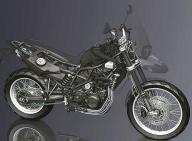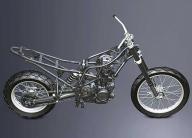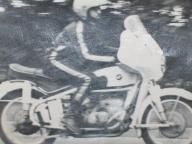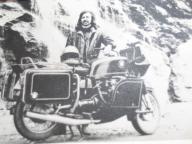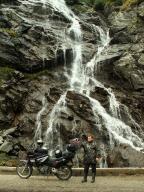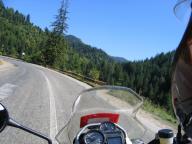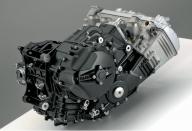-
Număr conținut
2.738 -
Înregistrat
-
Ultima Vizită
Tip conținut
Profiluri
Forumuri
Calendar
Orice postat de Dan Nastase
-
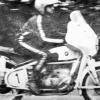
Ce Faceam Noi Cand Va Nasteati Voi
topic a răspuns lui Dan Nastase în Doru BMWul Poze & Filme - Arhive 2005 - 2013
LA MULTI KILOMETRI FRUMOSI ! ... Imi recunosc in acele fotografii prietenii - fat-frumosi si domnite ai timpurilor romantice ajunsi acum veterani - personaje de poveste pentru tinerii motociclisti de azi... Va salut cu stima pe toti - oameni cu inimi de aur ! Dan Nastase 1968. Cu prima-prima "Cleopatra" nu am poze... 1972. "Cobra" 1974. "Campionul" 1983... Prototipul "Condor" BMW-ul cu motor de Wartburg... ... Si "Legenda continua"... -
Sincere felicitari pentru toate frumoasele escapade motorizate si prezentarile lor. Totusi - pentru a nu ramane cu un iz amar de abandon - dupa o jumatate de an - in legatura cu "Black Sea Tour" - cititorii romani asteapta si acum finalul...
-
REMEMBER DAKAR... Anul acesta traim din amintiri... Dar amintiri dragi noua. A trebuit sa treaca peste un sfert de secol pentru ca in paginile de legenda ale celui mai teribil rallye-raid din lume - Dakar - sa apara tricolorul romanesc. Nu cred ca exista in lume pasionat al vietii pe doua roti motorizate care sa nu vibreze la gandul participarii la aceasta competitie extraordinara. Este adevarat ca de la vorba la fapta este o cale atat de lunga si rigorile impuse de supermaratonul african nu pot fi depasite doar printr-un exercitiu de vointa. Determinarea este o calitate obligatorie, dar nu suficienta. Posibilitatile materiale, pregatirea fizica de exceptie, sustinerea unei echipe tehnice corespunzatoare impreuna cu o pasiune fara margini pentru ceea ce denumim intr-un cuvant motocicleta fac diferenta intre a dori si a reusi. Poate ca nu este intamplator - pentru toate cate se petrec astazi in tara noastra - ca aceasta reusita de exceptie nu a fost patronata de nici un for diriguitor, ea fiind pur si simplu o realizare particulara. Asta nu scuza, evident, faptul ca oamenii care sunt abilitati sa organizeze si sa sprijine astfel de competitii nu au contribuit la aceasta actiune de prestigiu. Convingerea noastra sincera este ca si acum exista persoane in Ministerul Sporturilor care habar nu au despre ce este vorba. Suntem dezamagiti si de modul cum au reactionat mass-media. Cu foarte rare exceptii, nu s-a publicat aproape nimic despre echipa romaneasca plecata sa se ia la tranta cu infernul. Putem sa facem o foarte scurta trecere in revista a celor care s-au implicat emotional, dar, din pacate, despre oportunismul si analfabetismul intru moto al majoritatii fratilor nostri de ginta gazetareasca am putea sa umplem pagini intregi... Dupa razboi, multi viteji s-au aratat, in special dintre aceia care sunt gata sa rastalmaceasca evenimentul, mai ales cand el are si o aura de senzational. Din fericire totusi, au existat cativa reporteri inimosi care au insotit echipa pana in Spania, pe linia de plecare. Lor li se adauga miile de pasionati care au accesat site-ul www.motociclism.ro si omul de suflet care a strans toate aceste pagini emotionante intre copertele unui album pe care i l-a daruit la intoarcerea in tara celui mai motociclist dintre noi - Romeo Dunca. Prieteni, sa nu va fie cu suparare! Lasati-ma sa il consider asa macar acum, cand, dupa mai bine de 25 de ani, un roman participa pentru prima data si ajunge la Dakar! Pe buna dreptate, pentru noi el este un invingator! Romanul izbeste cu caciula de pamant de ciuda, dar si de hotarare. Cand l-am vazut pe Romeo dand cu casca de nisip, am fost convins ca, daca tehnica nu il va trada, imensa lui ambitie il va purta pana la Dakar. Si asa a fost! Dupa care, acest tanc de om vine acasa si ne spune noua, tuturor, cum este sa joci totul pe o singura carte, sa te bati cu indarjire mii de kilometri si sa invingi. Sa poti intra in legenda cu propriile puteri, pentru ca asa vrei tu si sa nu mai doresti niciodata acest lucru. Si toate, demonstrate cu o modestie fara seaman. Aceasta este lectia de normalitate! Pentru ca masura lucrurilor firesti o dau faptele exceptionale. Pentru ca in zilele noastre, cand orgoliile se umfla mai ceva ca un balon de sapun si cand ambitia se alatura arareori cu munca si realizarile, avem, in sfarsit, unul de-al nostru care, luandu-se in fiecare clipa de piept cu moartea, ajunge calare la Dakar, dupa o cursa infernala de 9.000 km! Nobletea spiritului si a inimii, atunci cand nu este mostenita din familie, se poate dobandi totusi. “Per aspera ad astra” este dictonul antic calauzitor pentru generatii intregi de cutezatori care au privit dincolo de mirifica linie a zarii. Suntem, fara indoiala, plamaditi din noroi, dar si din pulbere de stele... Mandra elita a barbatiei absolute, cavalerii au invins timpul calari pe armasarii lor nazdravani cu stea in frunte... Sarut mana, cavalere Romeo Dunca! Sa traiesti, baciule Zsolt Szilveszter! Tot iainte cu darzenie, Many Gynes ! Cinste si Onoare, Marcel Butuza sau oricare va fi de acum inainte numele tau - cutezatorule ! Un salut de muschetar roman plin de admiratie intregii echipe cu tricolor rosu, galben si albastru. Dan Nastase
-

A Fost Lansat Noul Bmw F800gs
topic a răspuns lui Dan Nastase în dasdasul Discutii generale enduro si motocross
Lasand malitziozitatea la o parte, ne este foarte clar ca noul BMW F 800 GS este o reusita, R 1200 GS este o cu totul alta motocicleta fatza de F 800 GS, iar noul R 1200 GS Adventure o cu totul si cu totul alta poveste... Am renuntzat din motive sentimentale la bravul meu "Universal Soldier" BMW R 1200 GS model 2006, am acum un K 1200 RS (pentru ca eu, oricum, schimb modele cam o data la doi ani), ma gandesc, fireste, in continuare la seria GS "CREDIT PENTRU ORICE", ma atrage noul F pentru versatilitate, economicitate, greutatea redusa si inteligentza tehnica oferita dar pentru "long trip" nu ma "incanta" lipsa cardanului... Pretzul "miarului" ramane mare pentru Romania, chiar cu noile imbunatatiri, inclusiv ESA, dar... "BMW prĂŠsente la nouvelle BMW R 1200... L’architecture de base, la transmission et la prĂŠparation du mĂŠlange, le moteur animant la nouvelle R 1200 GS est dĂŠclinĂŠ de celui de la R 1200 R, mais avec une gestion ĂŠlectronique retravaillĂŠe et optimisĂŠe. Sa puissance atteint dĂŠsormais 105 ch et son rĂŠgime maximal a ĂŠtĂŠ portĂŠ à 8 000 tours/minute. Les accĂŠlĂŠrations plus franches ont ĂŠtĂŠ optenues grâce à un changement des rapports de boîte et notamment le raccourcissement du rapport secondaire. La boîte à six rapports dont la conception a ĂŠtĂŠ revue prĂŠsente des roulements d’un diamètre plus grand et un ĂŠcart modifiĂŠ entre les arbres pour tenir compte de la puissance moteur accrue, de la plage des rĂŠgimes plus large et des conditions d’utilisation extrêmes auxquelles la R 1200 GS peut être confrontĂŠe. La 1200 GS bĂŠnĂŠficie en plus de l’ESA mis en oeuvre sur la K 1200 S qui permettait d’intervenir sur le tarage de l’amortisseur sur les deux combinĂŠs – celui du Telelever à l’avant et celui du Paralever à l’arrière – ainsi que sur le rĂŠglage de la prĂŠcontrainte (base) du ressort à l’arrière. L’ESA Enduro offre de plus un rĂŠglage ĂŠlectrohydraulique de la prĂŠcontrainte du ressort avant, avec des modes route et tout terrain – adaptation optimale à l’usage visĂŠ - à partir d'un simple bouton." "AVENTURA" este aproape prohibitiva pentru romanul de rand dar nici noul BMW F 800 GS la aprox. 10.000 (pretz bun de baza) nu este foarte accesibil... Dupa cum spuneam mai inainte... inginerii nemtzi ne-au adus intr-o adevarata... "trilema". La mai multe ! Sa ne vedem sanatosi pe sosea ! -

A Fost Lansat Noul Bmw F800gs
topic a răspuns lui Dan Nastase în dasdasul Discutii generale enduro si motocross
Adevarul este ca suntem intr-o... "trilema"... mama lor de nemtzi ! Daca nu vrei lantz tragi cu ochiul la GS 1200... si daca tot faci efortul... clar iti face cu ochiul varianta Adventure... Despre oameni ca si despre motoare indicat este sa ne spunem parerea in cunostinta de cauza. Cei care fac glumitze "patinate" pe seama cuplului noului BMW F 800 GS sa priveasca cu atentie datele tehnice, rapoartele de transmisie si in special curba de cuplu. Remarcabila ! BMW F 800 GS Technical Specifications Engine Capacity cc 798 Bore/lift mm 82 / 75.6 Power kW/HP 63 / 85 at engine speed RPM 7 500 Torque Lb-ft 61 at engine speed RPM 5,750 No. of cylinders 2 Compression/fuel :1 12.0 / Super unleaded (95 RON) Valve/gas control DOHC (double overhead camshaft) Valves per cylinder 4 Valve diameter inlet/outlet mm 32 / 27.5 Throttle valve diameter mm 46 Mixture preparation Electronic manifold injection, engine management BMS-KP Electrical system Generator W 400 Battery V/Ah 12/14 Headlights/rear light W 55 (full/dipped beam) 5 parking light. LED(braking/rear light) Starter kW 0.9 Power transmission/gears Clutch Multidisc clutch in oil bath, mechanically activated Gears Dog-coupled six-gear transmission Primary transmission 1:1.943 Transmission, gear stages I 1:2.462 II 1:1.750 III 1:1.381 IV 1:1.174 V 1:1.042 VI 1:0.960 Rear wheel drive Endless-O-ring chain drive with back damping in wheel hub Transmission ratio 1:2.625 (16/42) Chassis Frame design Tubular frame in steel, partly carrying the engine Wheel suspension, front wheel Upside-down telescopic fork, fixed tube Ø 45 mm Wheel suspension, rear wheel Double-strut swing arm, aluminum cast in one piece Spring travel front/rear mm 230/215 Castor mm 117 Wheel spacing mm 1578 Steering head angle ° 64.0 Brakes front Double-disc brake Ø 300 mm rear Single-disc brake Ø 265 mm on request: BMW Motorrad ABS, disconnectable Wheels Spoked wheels with aluminum rims front 2.15x21 rear 4.25x17 Tires front 90/90-21 54 V rear 150/70-R17 69 V Dimensions and weights Total length mm 2,320 Total width with mirrors mm 945 Total width without mirrors mm 870 Seat height mm 880 (optional 850) Dry weight kg 178 DIN tare, ready to drive kg 207 Perm. total weight kg 443 Tank capacity l 16 Travel data Fuel consumption 90 km/h l/100 km 3.8 Fuel consumption 120 km/h l/100 km 5.2 Acceleration 0–100 km/h sec 4,1 Maximum speed km/h over 200 --- Mesaj completat în 11 Jan 2008 22:05 ------------- High-Revving Engine With Great Torque The modern fuel injection system isn't the only thing that ensures a prompt response from the F 800 GS twin; its low centrifugal mass also contributes to its agile power development. Even at the bottom of its rev range, the four-valver, which, with a bore-stroke ratio of 82 to 75.6 mm is not particularly short-stroked, soon speeds up and releases a good 90% of the maximum torque in the broad range between 4,000 and 7500 RPM. Between 5,000 and 8,000 RPM, the engine develops its power dynamically, accompanied by a unique "Boxer" sound. The nominal performance data of the 798 cc twin of 85 HP at 7,500 RPM and 61 lb-ft of torque at 5,750 RPM therefore gives an incomplete picture of the potential that is available in practice. In combination with the low total weight and closely stepped six-speed trans-mission, the F 800 GS accelerates from 0–100 km/h in about 4 seconds, and the top speed is over 200 km/h. But it is not only the acceleration of the new GS model that is impressive; its traction is also remarkable. The BMW development engineers have focused quite deliberately on the smooth, confident development of power in the mid engine speed range rather than on absolute peak performance. Sporting riders will be bowled over by the engine’s acceleration, while touring riders should enjoy the twin’s strong traction with minimal shifting. The parallel twin, which has been optimized for Enduro operation, not only manages to walk the tightrope between powerful torque and dynamic acceleration, it also proves that good performance does not necessarily involve high fuel consumption. Ridden over country roads, a consumption of well below 5 liters of premium grade fuel per 100 km is possible. If required, the F 800 GS can also be fitted for use with normal octane fuel, which, however, reduces the peak performance by 2 HP and increases fuel consumption slightly. This modification is carried out by calling up a characteristic map in the control software, and can be cancelled again at any time. ... High-Revving Engine With Great Torque -
... Feriti-va de ziua in care AKM-ul va fi cel mai tare...
-
2008... O lovitura grea data spiritului Dakarului... In special frumosilor nebuni romantici - alergatorii particulari. Traim cu iluzia ca civilizatia conduce lumea... Al-Qaeda e cea mai tare... Allah Akbar !
-
2008 - Motociclistilor de pretutindeni - Un an nou cu noroc, bucurii, sanatate, dragoste si belsug ! La multi kilometri frumosi ! Centaurul
-
Desi arhitectura motorului difera datorita liniei generale FZX mai este supranumita "sora mai mica" sau "micul V-Max". Fisa tehnica usor schimbata de la primul la ultimul FZX. Model: Yamaha FZX 750 Year: 1987 Category: Naked bike Displacement: 749.00 ccm (45.70 cubic inches) Engine type: In-line four Stroke: 4 Power: 94.00 HP (68.6 kW)) @ 9500 RPM Compression: 11.2:1 Bore x stroke: 68.0 x 51.6 mm (2.7 x 2.0 inches) Valves per cylinder: 5 Fuel control: DOHC Cooling system: Liquid Gearbox: 6-speed Transmission type final drive: Chain More details Consult a Yamaha repair manual. Physical measures Weight incl. oil, gas, etc: 225.0 kg (496.0 pounds) Chassis and dimensions Front tyre dimensions: 110/90-16 Rear tyre dimensions: 140/90-15 Front brakes: Dual disc Rear brakes: Single disc Speed and acceleration Top speed: 216.0 km/h (134.2 mph) Other specifications Fuel capacity: 13.00 litres (3.43 gallons) Model: Yamaha FZX 750 Fazer Year: 1998 Category: Naked bike Displacement: 749.00 ccm (45.70 cubic inches) Engine type: In-line four Stroke: 4 Power: 88.00 HP (64.2 kW)) @ 9500 RPM Torque: 76.00 Nm (7.7 kgf-m or 56.1 ft.lbs) @ 8000 RPM Starter: Electric Cooling system: Liquid Gearbox: 6-speed More details Consult a Yamaha repair manual. Physical measures Dry weight: 204.0 kg (449.7 pounds) Chassis and dimensions Front brakes: Dual disc Rear brakes: Single disc Speed and acceleration Power/weight ratio: 0.4314 HP/kg
-

A Fost Lansat Noul Bmw F800gs
topic a răspuns lui Dan Nastase în dasdasul Discutii generale enduro si motocross
Salut, prieteni ! Sa comentam obiectiv: Germanii au o solida experienta in constructia de motociclete, si aici putem vorbi despre recordurile de viteza ale lui Ernst Henne din anii '30 (272 km/h) si "trecand" (la propriu) prin noroaiele sovietice (WWII), nisipurile Saharei, (Africa Korps), si culminand cu victoriile in Raliurile Dakar. Noul F 800 are ca indicativ "GS", deci Gelande Strasse. Teren si sosea. Asta inseamna: ca "civil" oarecare fiind - oricand iti vine dor de duca - poti sa te dai linistit multi kilometri pe asfalt si sa faci expeditii in teren "minat" cu oarece emotie, ca un adevarat cercetas motorizat... Analizand filmul: in primul rand motocicleta nu are numar de concurs (nu este de competitie) si poate fi condusa fara niciun stres dotata cu portbagajele aferente (un tourer usor)... Coloana sonora nu este edificatoare. Zgomotul real este suficient de barbatesc (aducand a motor boxer) si nu atat de agresiv ca un motor de concurs sa termini ziua la cabana, cheaun de "scufita"... Concluzie: nemtii au acoperit (speram cu succes) o nisa de piata. La multi kilometri frumosi ! Friend or Foe ?!... -
Salut, prieteni ! Cel negru: un R 1100 RT. "Batranul" albastru este "Big Blue" al meu. Un K 1200 RS. La multi kilometri frumosi !
-
...Deocamdata... Un salut voios de la un K 1200 RS
-
JOS PALARIA ! Cip & Ioana: sunteti "din alta lume"...
-

Poze Vechi Din Moto
topic a răspuns lui Dan Nastase în Bogdanvoiculescuul POZE & FILME - Intalniri moto in ROMANIA
Intotdeauna un gand frumos si jos palaria in fata maestrului Gheorghe Voiculescu ! Il vom tine minte ca pe un mare om si un mare caracter. In acea perioada in Romania se alerga in general cu tot felul de socialiste printre care la "viteza pe sosea" cele mai uzitate de catre cluburile sportive erau CZ-urile MC 400 de motocros modificate. In afara de cursele de dirt-track si motocros foarte spectaculoase erau deasemenea concursurile "six-days" si trial (viteza, regularitate si rezistenta, un fel de enduro cros). In campionatul de viteza pe sosea gen Insula Man (care se desfasura cu predilectie pe strazile din marile orase) exista categoria peste 500 cmc (ceea ce astazi s-ar numi superbike) in care se alerga cu motoare vestice, BSA, Norton, Triumph, etc. Imi permit sa atasez si eu o fotografie de la Campionatul Municipal de viteza pe sosea organizat de FRM in 1975. Mult noroc si sa auzim numai de bine ! -
...Si uite asa se scrie istoria... Cu ironii amicale sau mai amare dar intotdeauna cu multi kilometri frumosi. Din pacate eu nu am nicio poza cu Supertenere-ul... Dupa cum zic profesionistii de la Alpenmasters... bun si BMW-ul. Aceeasi cascada alte personaje... dupa 23 de ani.
-
Salut, prieteni ! Dupa ce "m-am dat cu motocicleta asta 16.000 km, incluzand "Turul Romaniei intr-un weekend" pot spune ca BMW R 1200 GS este... "credit pentru orice"... Sa fiti iubiti si la cat mai multi kilometri !
-
Driven by New Engine Technology BMW's famed Boxer engines have continued along an aggressive development path to their current state of the art, but it has been recognized that an inline arrangement is the best overall compromise for a four-cylinder engine when maximum performance and lightest weight are the primary goals. BMW chose a novel arrangement for the K1200S's four-cylinder engine. The liquid-cooled four-cylinder powerplant is aligned across the frame-a significant departure from the K-Series standard of a longitudinally biased configuration. Not only has the new engine been designed to be as compact as possible, but in an effort to optimize the motorcycle's overall center of mass and fore/aft weight distribution, the cylinder bank is leaned forward 55 degrees from vertical. By canting the cylinder block forward, the four-valve-per-cylinder head rides much lower in the chassis, moving the engine's center of mass forward and down, which helps improve steering response and front-wheel traction on such a powerful motorcycle. It might be enough for some manufacturers to come up with this unique arrangement, but BMW has pushed the advantages even further. The space created by canting the cylinder block allows the transmission shafts to be stacked vertically to help reduce overall engine height and to better centralize the powerplant's mass. Imi pare rau sa constat din unele discutii de pe acest forum ca in Romania este foarte greu sa ducem mai departe nobletea acestei marci de exceptie... Iar acelora care considera ca serile R si K sunt doar pentru pensionari, daca nu vor avea vreodata prilejul sa faca performante cu ele, macar sa le citeasca istoricul recordurilor...
- 9.820 răspunsuri
-
- Difuzoare schimbate
- R1100 RT
- (și 4 alții)
-
Salut, prieteni ! Unele surse anununta ca posibila aparitia in curand a unei variante GS enduro-touring de 800 cmc altele de 850 cmc. Cu transmisie finala prin curea dintata ori prin lant... Inca nu s-a stabilit nimic clar. Ceea ce se stie sigur este ca va fi un paralel-twin. Oricum, pentru drumurile Romania cred ca modelul GS este mult mai indicat decat R... Din 1974 conduc tot felul de modele BMW... R, F, K - RS, GS, Dakar... Toate au farmecul lor.
- 9.820 răspunsuri
-
- Difuzoare schimbate
- R1100 RT
- (și 4 alții)
-
...Vad ca nimeni nu ia in calcul viitorul F 850 GS...
- 9.820 răspunsuri
-
- Difuzoare schimbate
- R1100 RT
- (și 4 alții)
-
...Si cand te gandesti ca motoreta Mike Hailwood ("Mike the Bike") ar putea fi chiar incalecata si pilotata de o femeie !!!
-
ODA STANESCULUI Tin minte nene Stanescule (sper ca si tu) chiar la inceputul aventurarii tale in lumea jurnalismului moto ti-am spus ca pe langa subiecte interne beton oameni dedicati - de condei aprig si talentos o revista moto are nevoie si de drept de copyright intru oglindirea asa cum se cuvine "la zi si la obiect" a pasiunii noastre intru fiare. Printre altele aud ca iei lectii de perfectionare in conducere moto. ...Si asta este un lucru foarte bun ! Timpul trece... si demonstreaza ca am avut dreptate... spre binele cititorilor din Romania. QED: Critica mea a fost sincera si constructiva. PS. Nu mai sari la beregata "Bunicului" ca zice pozitiv si nu demolator... Sa auzim numai de bine !
-
Salut, prieteni ! Dreptul cititorilor la opinie este de necontestat. Mai ales atunci cand critica se face in scop constructiv si ajuta revista. Nu este si cazul batracianului fictiv, sa-l numim... Bulica. Altfel, de ce ar transforma o formula de salut cat se poate de eleganta - care ni se adreseaza noua, pasionatilor motoarelor - "Gentleman, start your engines! Va salut cu farul" intr-o mitocaneasca si ignobila oracaiala, il citez: Gentleboyz start your toyz! Va salut cu parul!... Este evident ca personajul cauta doar cearta cu tot dinadinsul... Sa fiti iubiti ! La multi kilometri frumosi ! Dan
-
Salut, prieteni ! Onestitate, demnitate, pasiune... Pentru foarte multi dintre noi acestea nu sunt doar simple cuvinte. Sa traiesti "rebel, boem si liber", asa cum esti tu si nu cum iti dicteaza altii... Sa-ti traiesti victoriile ca pe o sarbatoare dedicata celor din jurul tau si sa te ridici mai bun, mai drept si mai intelept dupa fiecare neimplinire... Sa mananci "paine cu stele" noaptea pe barajul Vidraru, atunci cand te-ai incumetat pentru prima data doar tu si calul tau de poveste sa invingeti singuri Transfagaraseanul... O viata dedicata motocicletelor. Si scrisului. Un mod de viata... Prieten intelegator cu cei aflati la inceput de drum. Intransigent, critic si sever cu impostorii. Cu cei care "se dau" si nu sunt... Multumesc cititorilor si colegilor pentru tot ce a insemnat impreuna. Va salut cu farul cel care sunt dintotdeauna - un motociclist roman ! La multi kilometri frumosi ! Dan.
-
Sa-ti traiasca "scula" pentru ca o meriti ! La multi kilometri frumosi !
-

Stie Cineva Care Este Viteza Maxima A Unei Yamaha Fzr De 400
topic a răspuns lui Dan Nastase în Kravenul Motociclete de viteza
In 1996 revista "Australian Motorcycle News" a declarat Kawasaki ZX-6R "Best Bikes 600 cc". La multi kilometri frumosi !


